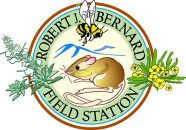Vezino, Sean (2000)
The Recolonization of Previously Developed Land by the Coastal Sage Ecosystem.
Bachelor of Arts, Pitzer College, Biology.
Advisor: Donald McFarlane.
This study investigated the movement of California coastal sage scrub ecosystem in reclaiming previously developed. The study examined a 105 x 200-m area of the Bernard Biological Field Station to provide insight on coastal sage scrub (CSS) competition with non-native grasses, and patterns of migration for these plant species. A quadrat system of inspection was used to census the area size and location of all coastal sage scrub species and other shrub species. Soil analyses were also conducted to provide insight into soil conditions that support CSS plant establishment and points of competition between CSS plants and non-native grasses. The soil analysis measured nutrient levels (nitrate and phosphorus), soil moisture, soil penetrability, and soil composition. The study showed the establishment of coastal sage scrub within the study area. The CSS plants were rated according to their migration abilities with Eriogonum fasciculatum, Eriodictyon trichocalyx, and Rhus laurina being classified as pioneer species. Salvia apiana, Rhamnus californica, Artemisia californica were less successful and classified as latecomers in the colonization process. The placement of these plants betrayed a connection between borders between the study area and established CSS areas. The soil testing results demonstrate that soil moisture is the primary point of competition between CSS plants and non-native grasses. Soil nitrate depletion is also connected with CSS plant establishment. Other suggestive patterns were identified including high phosphorus and soil penetrability surrounding CSS plants. Overall this study provides a model of CSS recolonization for future studies and to aid in the preservation of the endangered coastal sage scrub ecosystem.
